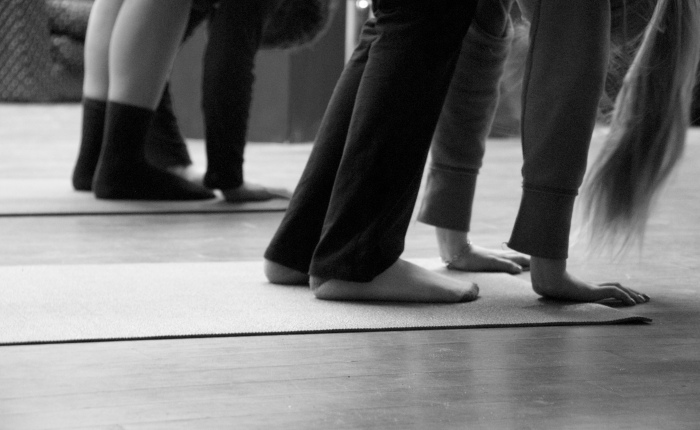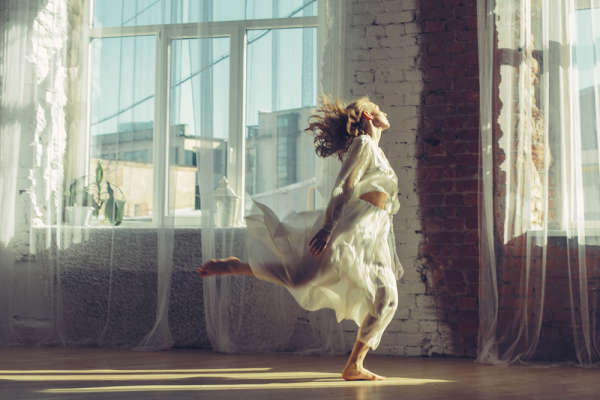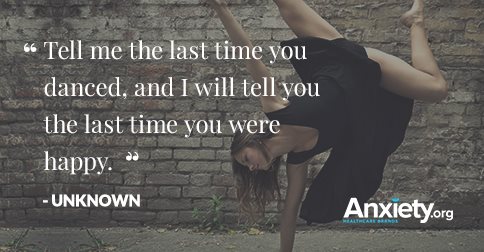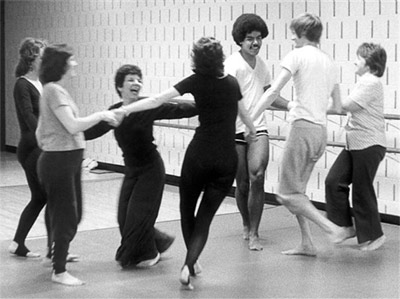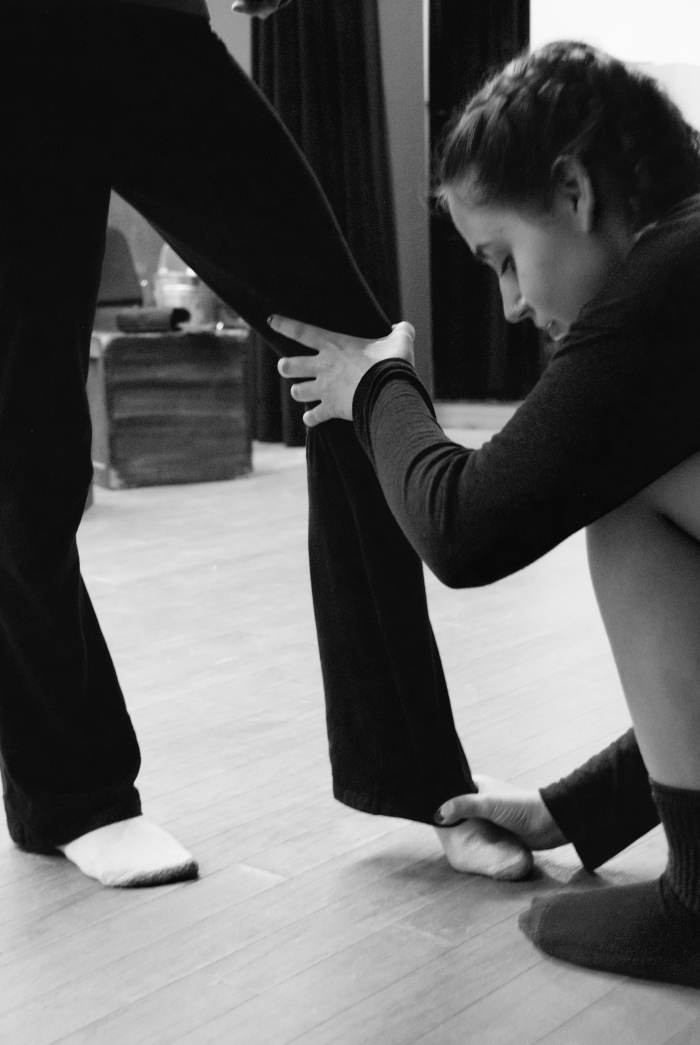
My name is Marina Phillips and I’m an Interdisciplinary Studies Major at Plymouth State University. The beauty of being an Interdisciplinary Studies major is that I am in complete control of the way I foresee my college experience. My goal in the long run is to receive my Masters in Dance-Movement Therapy. In knowing this, I created a major that catered to my goals. Combining the disciplines of Social Work, Psychology, and dance I now have the option of going to grad school to become a licensed dance-movement therapist. I plan to work with patients in a children’s hospital to help them over come daily struggles. These struggles can range from anything between relieving anxiety before a surgery, lifting their spirits after chemotherapy, or even helping them gain a positive body image while overcoming anorexia.
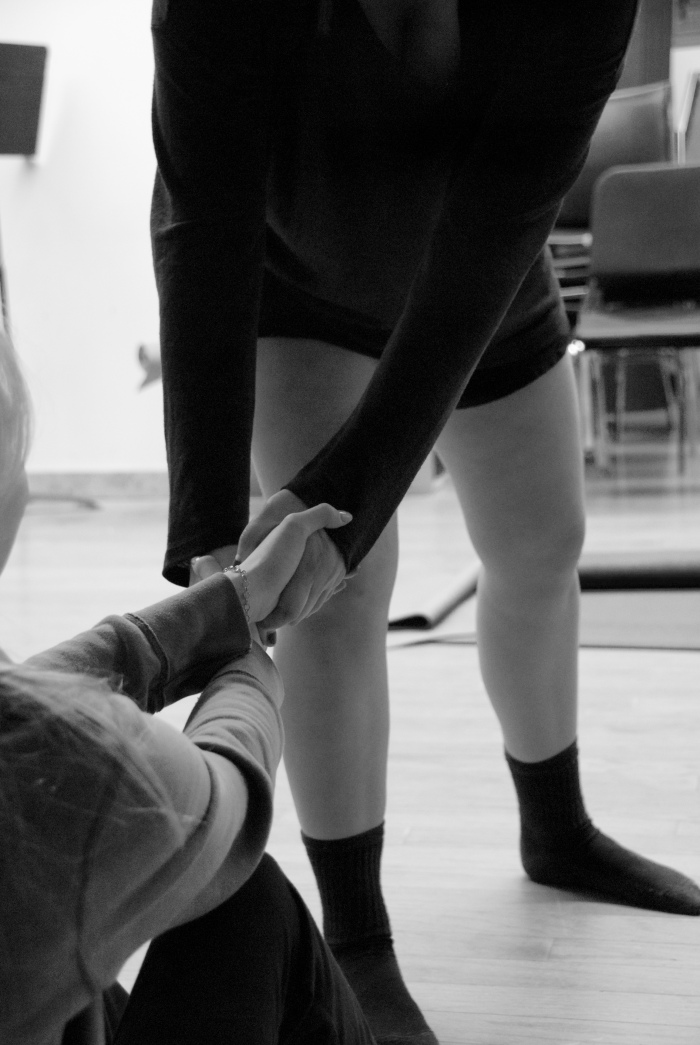
My project in action consisted of mentoring a 13 year old girl, named Gracelyn, who suffers from social anxiety disorder. Each week we meet for an hour and a half to two hours, completing a total of 14 hours. Session begin with us having a quick chat about her week, both highs and lows. This helps me to better understand her way of thinking, therefor I will be able to find techniques that will cater to her struggles with anxiety. We then move into warmups consisting of yoga movements, and then move into guided meditation. Yoga and mediation are both very calming aspects to our sessions, it helps settle her mind and body so she will be better focused when going through other dance and movement therapy techniques. After yoga and mediation we begin trust exercises, such as trust falls. These exercises are important in building a positive and trusting relationship. My time with Gracelyn is also being used for my Independent Study. Throughout this process I have co-created a class with one of my Professors here at Plymouth State titled, Empowering Youth Through Movement. Students who take this class in the future will be conducting a dance and movement workshop for youth at the end of the semester. The trust exercises are the portion of my time with Gracelyn that I use to test movements for the future workshops. The rest of my sessions focus on Gracie and relieving her anxiety, although I do truly believe that these sorts of exercises are important with gaining trust from a client. I then move into guided improvisation. These techniques consist of exercises like, the Potter and the Clay, mirroring and across the floor work. The Potter and the Clay involves one person molding, or shaping another person. For example, I would stand still and Grace would move my arms, legs, torso, etc. to shape me they way she wanted, then we would switch. Mirroring involves the two of us facing one another, we would take turns moving in different ways with the other following their exact movement. Then we would attempt to move together, with not one person leading, forcing our energy to move as one. Across the floor exercises are composed of a variety of movements. For starters I would tell Gracie to use a specific body part pull her across the floor, and make sure to use levels. The term using levels suggests she get up as high has she can reach, to rolling on the ground, and every where in between. I would then call out a body part such as her finger and she would stick her pointer finger in the air and follow it as if she were being pulled by a dog on a leash. All of these exercise help Grace to understand her full range of movement and to explore which movements feel best to her body, mind, and soul. After the guided improvisation I teach her a piece of choreography I have choreographed. Each piece of choreograph explores a different dance genre that my mentee expressed interest in and are most commonly used to relieve anxiety. These styles consist of modern, contemporary, lyrical, hip hop, and ballet. Throughout the choreography sections I urge her to use her full range of movement to feel a full effect of the dancing on her body. Children with social anxiety are overly aware of themselves and are extremely self conscious, because of this I am sure to motivate her and lift her spirits up by saying words of positivity and encouragement. After choreography we end with yoga and mediation to bring her back to a place of calmness and peace. Each week I noticed more improvement from Gracelyn. Not only was she becoming more comfortable with me I could tell she was becoming more comfortable in her own skin. She would express in our talks that she was having an even amount of good and bad days at school, and although her anxiety was still a big factor in her life she could tell that improvements where happening. In one of the sessions something amazing happened. She asked me if she could perform her dances from her dance studio for me. This was a big deal because in the past sessions she would have me do the choreography with her instead of having me watch her do it alone. She once told me that the only reason she is able to get up on stage at her annual studio performances was because the lights are so blinding she is not able to see the audience faces. Now, here I am, having this young girl perform her dances for me by herself, thats amazing. Although small steps have been made, I’ve concluded that to get her in a place where her anxiety isn’t a major aspect in her life, I feel our sessions together should be continued for at least three more months to see progress that would truly enhance her life. I came to this conclusion because if we made strides this big in three months time, doubling the time would do wonders for Gracie.
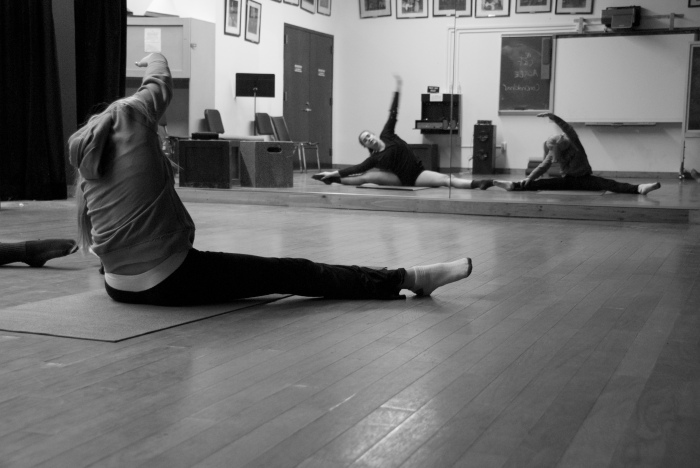
The title of my major is Youth Services through Dance, and that is precisely what my project in action was about. In doing this project I was able to put into practice what I have learned in all three of the disciplines that compose my major. I was able to gain a better understanding of what dance-movement therapy truly means, all while helping a child who was in need of my services. My background in Social Work allowed me to understand how to talk to and have better communication with my mentee along with her parents. It taught me the techniques to have more compassion towards a person and fully understand what they are trying to express to me. My psychology background gave me the tools I needed in understanding the psychological reasoning behind anxiety, and how dance-movement therapists express the importance in the mind, body connection. Lastly dance gives me the full understanding of how the body works, the importance of different movements and how they effect both the physical body and the soul in a positive way. I have pulled techniques to use with Grace from the 18 years of dance experience that I have, along with dance therapy books that include specific exercises and techniques. Lastly I took a yoga course here at Plymouth where I learned yoga and meditation techniques that I use with Gracie.
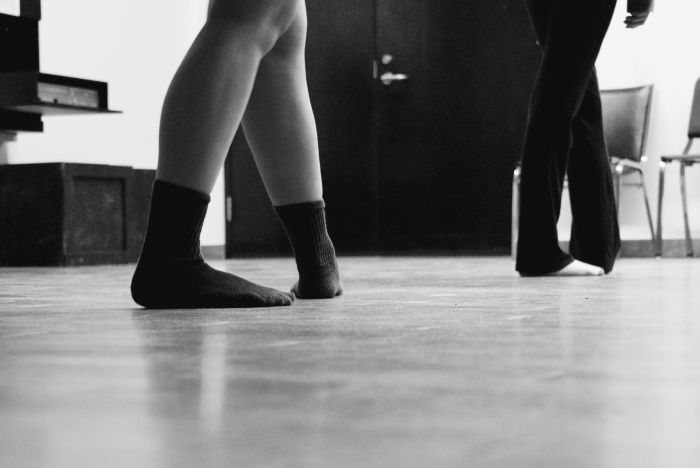
My research really benefited the way I worked with Grace and how to give us both a positive experience where together we learned, grew, and gained a lot out of our short time together. One of the first articles that I read discussed a study that investigated the effectiveness of modern dance on anxiety. This study questioned whether the participants outcomes were based on outside factors such as the music or the athleticism of dance, or dance itself. To test this, they created four groups. The groups were involved with either music, sport, mathematics or dance. Although they found that sport and music did help to relieve some anxiety, dance in fact did have the highest rates of relieving anxiety in participants. They stated, “Dance furthers the physical and emotional integration of the individual” (Lesté). With this being said its important to understand that, “Psyche and matter are ‘two different aspects of one and the same thing. It seems highly probable that the psychic and the physical are not two independent parallel processes, but are essentially connected through reciprocal action…” (Chodorow, pp. 44) This realization caused me to incorporate yoga and meditation into my mentoring sessions. It’s important to understand yourself both internally and externally. Psychological and physical growth can have a positive effect on a persons self-realization. Research on mediation gave me a greater appreciation for the meditation sessions I included in my mentoring program. It is much easier to be an outside factor that has a positive effect on another human. However, it is just as important to guide others to look within and observe their mental state and bodily sensations. Dance-movement therapy isn’t just about the course of action you take while working with the client, but also about how you help guide them through their own thoughts. “…where psycho-analysis brings about change in the mental attitude, there should be a corresponding change in physical behavior. When a dance therapist brings about a change in a body behavior, there should be a corresponding change in the mind. Both methods want to change the total being, body and mind.” (Siegel, pp.12) A major component to my research was based on social anxiety. This information educated my understanding of Gracelyn’s daily struggles. There are four varieties of social anxiety, these include; shame, audience anxiety, shyness, and embarrassment. I then applied the information I received to incorporate ways to help her symptoms with dance and movement. One of the greatest lessons I learned about social anxiety is that there is a major difference between social anxiety and shyness. “While social anxiety is the most prevalent anxiety disorder, the understanding of its diagnosis has moved from elementary awareness that social anxiety is not merely ‘shyness’ to a more sophisticated appreciation of its prevalence and the fact that the individuals suffering from it experience many more symptoms than just being shy…Nowadays, social anxiety has been identified as an impairing psychiatric disorder, beyond normal human shyness.” (Kalyva, pp. 33-34) When I first met Grace I classified her in my own mind to be extremely shy. It wasn’t until my talks with her that she wasn’t shy, in fact social situations to her become a potentially tragic situation. She once stated to me that she never raises her hand in class, not even to use the bathroom, because she can’t bare to have all the attention on her even for a short moment. My sessions with her are helping to build her self confidence, and I can see a major improvement from the beginning of my time with her to the end. Her condition causes her to be extremely self-aware, a boost in her confidence is what she needs to help her in even the smallest situations that most wouldn’t even give a second thought about. Dance is a creative outlet that can be so healing to a person through the mind, body, spirit connection. Channeling your own energy in a positive way can guide a person to a sense of peace and understanding within themselves. I help guide Grace to channel her own understanding of movement that she can interpret in her own way, in a way that feels positive and refreshing to her mind, body and spirit. I boost her confidence by reassuring her how beautiful her movements are, and how special, unique and talented she is. “Just as the physical body gives us a literal and concrete structure that expresses who we are, so every part and function of the body can also be understood as metaphors for the expression of our being. We feel and observe our life experiences through our bodies. Focusing on the body and its language of expressive movement, we are able to draw our awareness to sensation, posture, gesture, emotion, and thought in concrete ways. The musculoskeletal structure shapes our characteristic body posture by containing, holding, and protecting our organs and nervous system. All of the stresses of our lives are stored in and affect the body, often creating distress and imbalance, which are reflected in our emotional and mental states. Our bodies contain our life stories just as they contain bones, muscle, organs, nerves, and blood.” (Halprin, pp. 18) Understanding oneself on a deeper level can be so healing to a person. Understanding and connecting all the different complexities of a person and combining them with movement in order to help oneself, or another person is vital in healing. Every human being consists of energy, and channeling that energy is renewing to not just the person who is seeking to find themselves, but also to those who are guiding them to get there. Connecting expressive therapies to those who struggle with anxiety will change a persons life for the better. The daily stresses that my mentees body goes through, is much more than a person her age should experience. Dance and movement allows her body to release all the tension that her body stores throughout the day, allowing her life to come into balance once again. Interpersonal relationships become established through movement with the client and it then produces positive changes in functioning as a whole. Another aspect discusses the notion of active moving, and states of stillness. It is presumed that expressing varying states of perceptual awareness can be triggered from within and without the self. Perceptions from within includes observing your own thought process, bodily sensations, etc. Perceptions the outside are responses to any stimuli that is affecting the human.
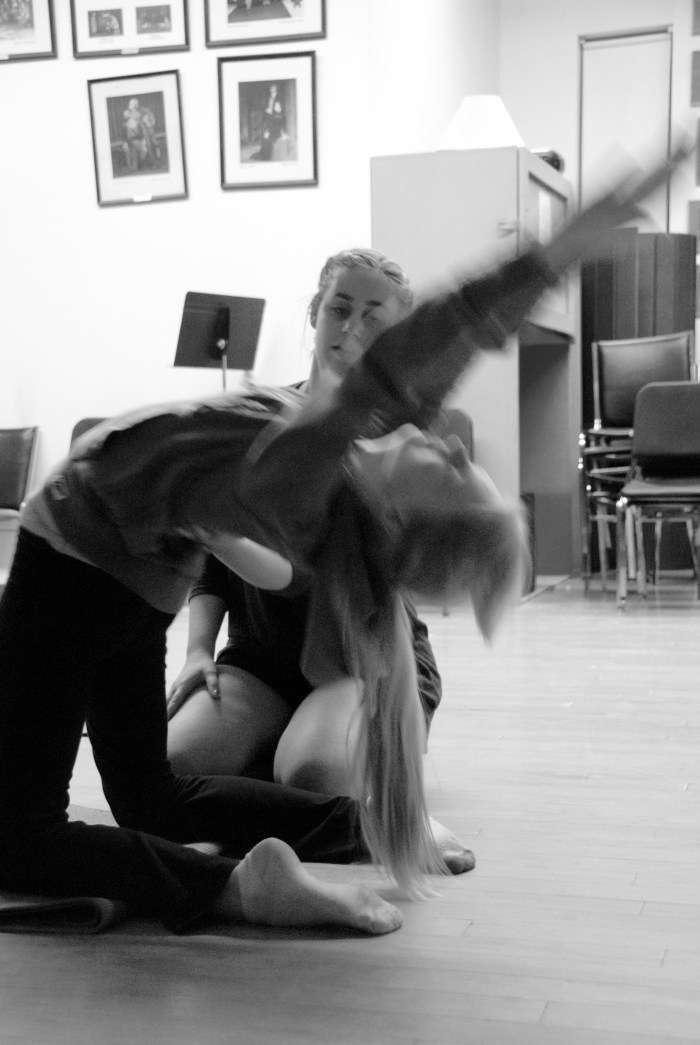
Throughout my research I have learned that there are so many different aspects that go into social anxiety, which in return creates so many ways in helping a person overcome their phobia. Mentoring has opened my eyes to understanding the true power of dance and movement beyond what I had already thought. Not only is it important to involve the physical self, but it is vital in also involving the mental self. Being able to connect the two is where healing and transformation comes to into play. This understanding has given me an even greater appreciation for the field that I am in, and has opened my eyes to all the various people I will be able to help with the power of dance-movement therapy. However, the biggest realization was what a true interdiscipliarian I have become. There are not many sources or experiments in which dance is used to relieve anxiety. With the lack of information on the general topic of the effects of dance and movement on anxiety, I had to piece together the insights of the three disciplines that compose my major to understand how to use vital components of all disciplines and then connect it to working with Gracelyn. Beyond my course work here at Plymouth, this experience has been one of the most educational opportunities for me and has given me insight into more than I could have ever thought possible.
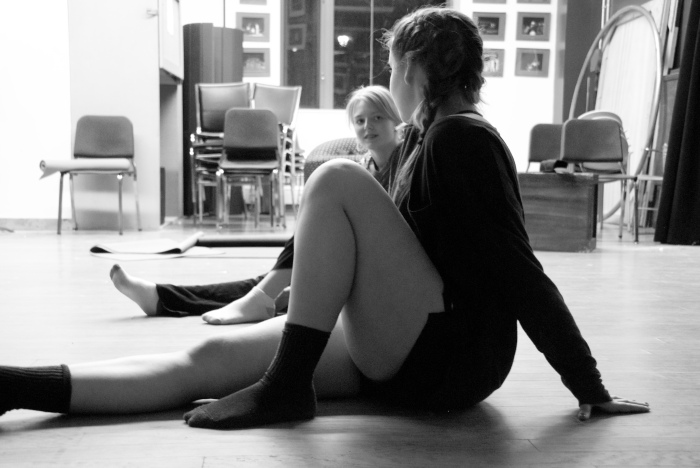
Works Cited
Buss, Arnold H. Self-consciousness and Social Anxiety. San Francisco: W.H. Freeman, 1980. Print.
Chodorow, Joan. Dance Therapy and Depth Psychology: The Moving Imagination. London: Routledge, 1991. Print.
Gawler, Ian, and Paul Bedson. Meditation: An In-Depth Guide. New York: Penguin Group, 2011. Print.
Halprin, Daria. The Expressive Body in Life, Art, and Therapy: Working with Movement, Metaphor, and Meaning. London: Jessica Kingsley, 2003. Print.
Kalyva, Efrosini. Social Anxiety: Perceptions, Emotional and Triggering Symptoms and Treatment. N.p.: Nova Science Incorporated, 2013. Print.
Lesté, Andre, and John Rust. “Effects of Dance on Anxiety.” Am J Dance Ther American Journal of Dance Therapy 12.1 (1990): 19-25. Web.
Levy, Fran J. Dance/movement Therapy: A Healing Art. Reston, VA: National Dance Association, American Alliance for Health, Physical Education, Recreation, and Dance, 1988. Print.
Robinson, Theresa M. Social Anxiety: Symptoms, Causes, and Techniques. Hauppauge, NY: Nova Science, 2010. Print.
Selman, L.e., J. Williams, and V. Simms. “A Mixed-methods Evaluation of Complementary Therapy Services in Palliative Care: Yoga and Dance Therapy.” European Journal of Cancer Care 21.1 (2011): 87-97. Web.
Siegel, Elaine V. Dance-movement Therapy: Mirror of Ourselves: The Psychoanalytic Approach. New York, NY: Human Sciences, 1984. Print.

This work is licensed under a Creative Commons Attribution 4.0 International License.
